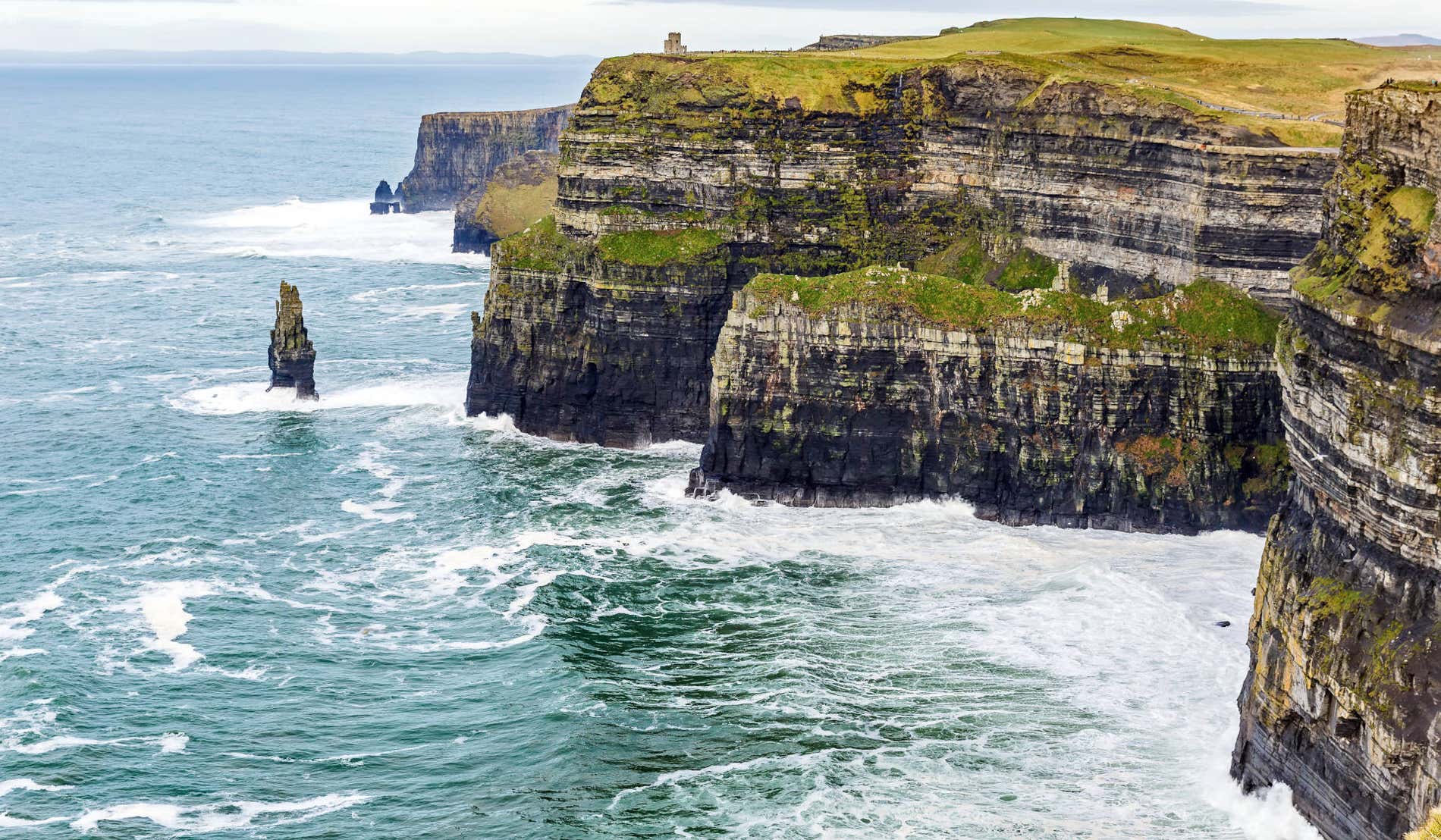Top 15: What to Do in Dublin, Ireland

Boasting a 1000+ year history, Dublin stands as one of the most culturally vibrant cities in Europe. Boasting a wonderful literary heritage, countless historic landmarks, and unmatched hospitality (it’s not called the Land of a Hundred Thousand Welcomes for nothing), Dublin is rightfully a bucket list destination for many. Whether you’re trying to get in touch with your Irish-American heritage, sample a locally brewed pint of stout, or anything else, we’ve got you covered with this blog, as well as our Dublin Travel Guide. Enjoy this local’s guide to the city, including all of the best things to do in Dublin, as well as some worthy day trips. Ar aghaidh linn! (Let’s go!)
Introduction
Before we get going, let’s answer a few questions you might have on your mind:
- What is the best time of year to visit Dublin?: Between May and September, the weather in Ireland is generally mild. However, it’s also famously unpredictable, so pack a raincoat!
- What language is spoken in Dublin?: The official languages of Ireland are English and Irish, and you’ll see both languages on signage across the country. There are some parts of Ireland (mainly on the west coast) where Irish is seen as the primary language.
- Is Ireland part of the UK?: The island of Ireland is divided into two. Northern Ireland remains part of the UK, whereas the southern part of the Island (the Republic of Ireland) has been independent since 1921.
- Where does the name Dublin come from?: The Irish capital city of Dublin takes its name from the Irish Dubh Linn (Blackpool), though in modern Irish, the city is known as Baile Átha Cliath (Town of the Hurdle Ford).
- Who was St. Patrick?: St. Patrick is Ireland’s patron saint, made famous around the world by the Irish day of celebration, St. Patrick’s Day. To learn more about this figure (and the day on which he is celebrated, check out this post about St. Patrick’s Day Celebrations around the World).
1. See the Book of Kells + Trinity College’s Old Library
Our journey through Dublin begins right in the city center, at Trinity College Dublin. Ireland’s oldest and most prestigious university, Trinity was founded in 1592 and has been attended by some of the country’s most celebrated figures, from Oscar Wilde (more on him later) to Samuel Beckett. The campus is largely open to the public and is a fantastic place to enjoy a stroll! Imagine yourself as one of the students as you enjoy wonderful, opulent architecture, some of which dates back to the 1700s.
Even more iconic than the college itself is the Book of Kells. This illuminated manuscript was created by Irish monks around 800 AD. While the texts themselves are of historical interest, it is the masterful, intricate, brightly colored artworks within the pages that make the Book of Kells famous.
When seeing the Book of Kells, you’ll also get the opportunity to visit Trinity’s old library, the main chamber of which is known as the Long Room. This stunning wooden room is lined with marble busts of celebrated thinkers and writers of the Western world, and Trinity alumni alike. The Long Hall is also home to the medieval Brian Boru Harp, dating to the 15th century. This harp is the oldest of its kind in the country and is the model of the emblem of Ireland. See all of it for yourself on this Book of Kells, Trinity College & Dublin Castle tour!
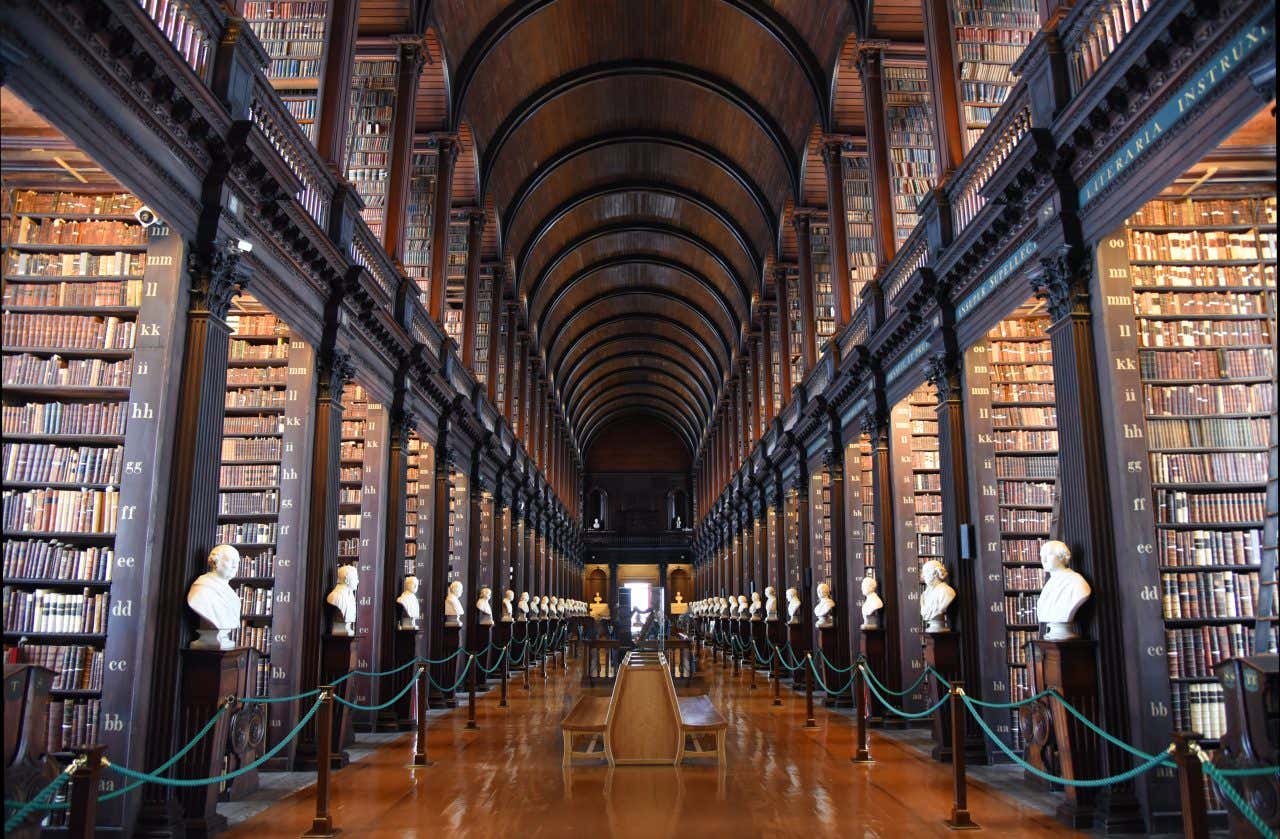
Fun fact: Did you know that Trinity College’s full name is actually ‘the Provost, Fellows, Foundation Scholars and the other members of the Board of the College of the Holy and Undivided Trinity of Queen Elizabeth near Dublin’? But don’t worry, you can just say Trinity while you’re there!
2. Visit the Guinness Storehouse & Jameson Distillery
When you think of Ireland, what’s the first thing you think of? It might just be the ever-iconic, black pint of stout. The humble pint of Guinness has a long history, dating back to 1759, when Arthur Guinness leased the brewery at St. James’s Gate at a price of 45 GBP per year for 9,000 years. Just over a hundred years later, the Guinness Brewery became the largest in the world. Today, you can visit the Storehouse at St. James’s Gate and enjoy a thorough history of the beverage, insights into the production process, as well as a cold pint from the 360-gravity bar, providing some of the best views of the city.
Another culturally significant drink in Ireland is whiskey. In fact, the word whiskey comes from the Irish uisce bheatha, which translates to ‘water of life’. You can learn all about this golden liquid as part of the Old Jameson Distillery tour. As part of this tour, you’ll gain a fascinating insight into the distillery’s production process and a taste of the golden liquid. With Civitatis, you can purchase this Guinness Storehouse & Jameson Distillery tour, which includes your visit to both locations, as well as a stop in the oldest pub in Dublin, which dates back to the 11th century.
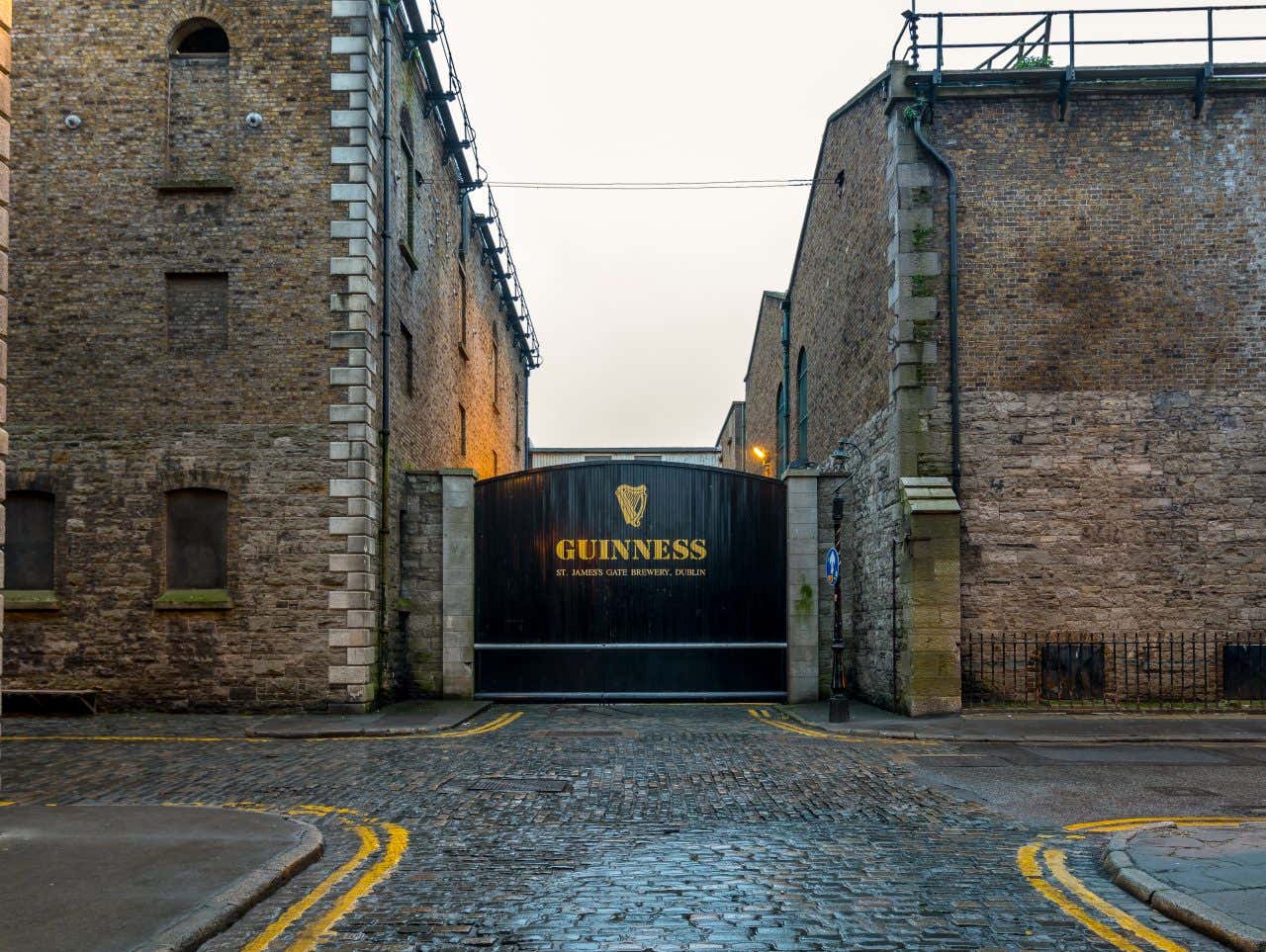
3. Go on the Howth Hill Walk in the Northside of Dublin
Making our way out of the bustling city center, the northern fishing village of Howth is home to a gorgeous harbour and stunning sea cliffs—and it’s less than half an hour from the city center by train! The best part of Howth is the cliff walk. From the train station, you can enjoy a leisurely 8-kilometer (5-mile) walk which brings you around some of the East Coast’s finest coastline and provides stunning views of the famous lighthouse.
On this Howth Peninsula Hiking Tour, you’ll enjoy a guided walk along the cliffs, all the way up to Ben of Howth, the highest point in the village. You’ll also get some time to grab some lunch in the village—don’t miss out on the famous fish and chips, which are considered to be among the best in the country.
For a deeper look at this section of the Irish coastline (and the chance to catch a glimpse of some puffins and seals), check out this Howth & Ireland’s Eye boat trip.
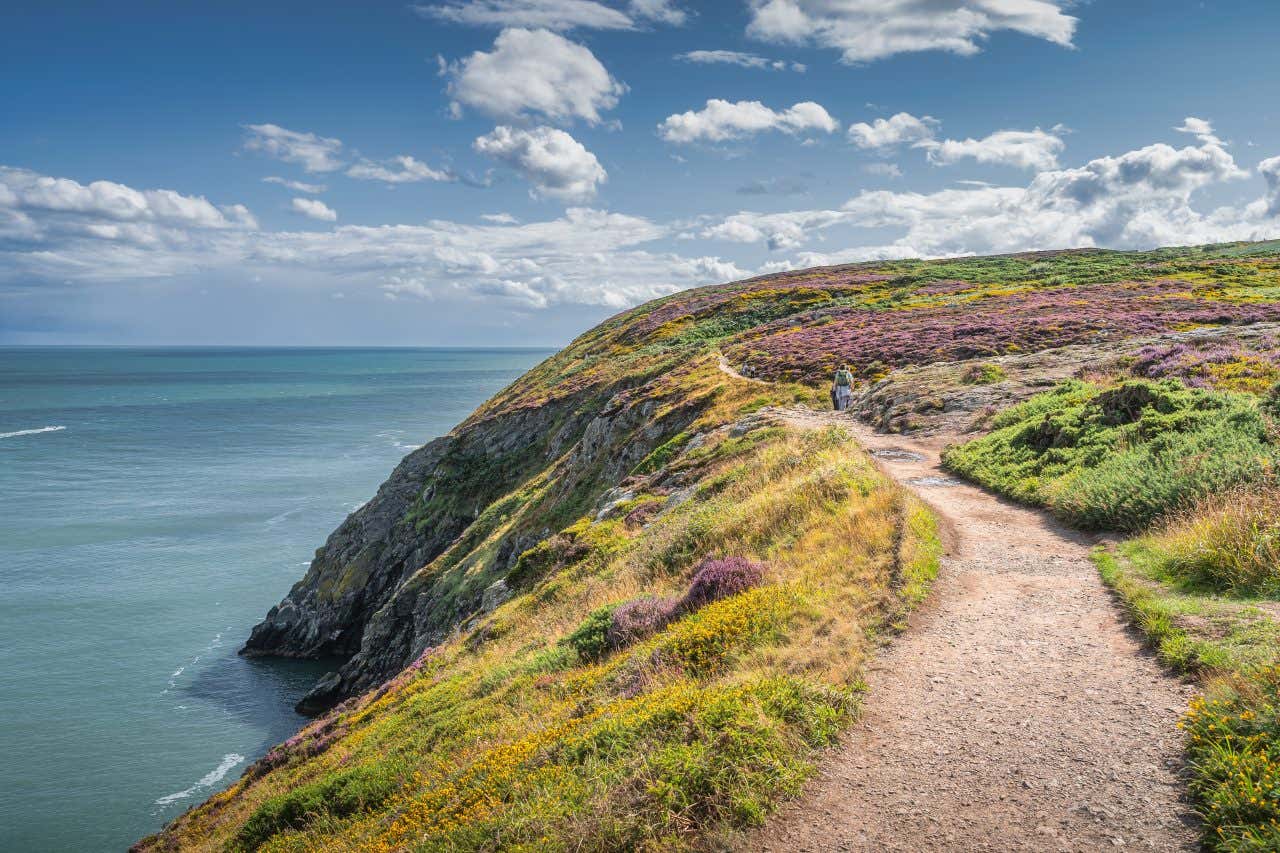
4. Enjoy a Guided Tour of Dublin Castle
One of the most famous landmarks in the city is Dublin Castle, which served as the seat of English and then British rule from 1204 until 1922. However, the history of this site goes back much further, as the castle was built on top of Viking ruins. The castle complex features a mix of architectural styles, from medieval towers to Georgian state apartments. Today, it hosts state functions and cultural events, including a Christmas market which runs for most of December.
To see it for yourself, Civitatis offers this brilliant guided tour of Dublin, which includes entry to the castle. The advantage of enjoying this guided tour is that you’ll first visit some of the other must-see landmarks in the city, including the Molly Malone Statue, Trinity College, and Christ Church Cathedral. What’s more, before going into the castle, you’ll have learned lots about the city and the castle’s long and storied history.
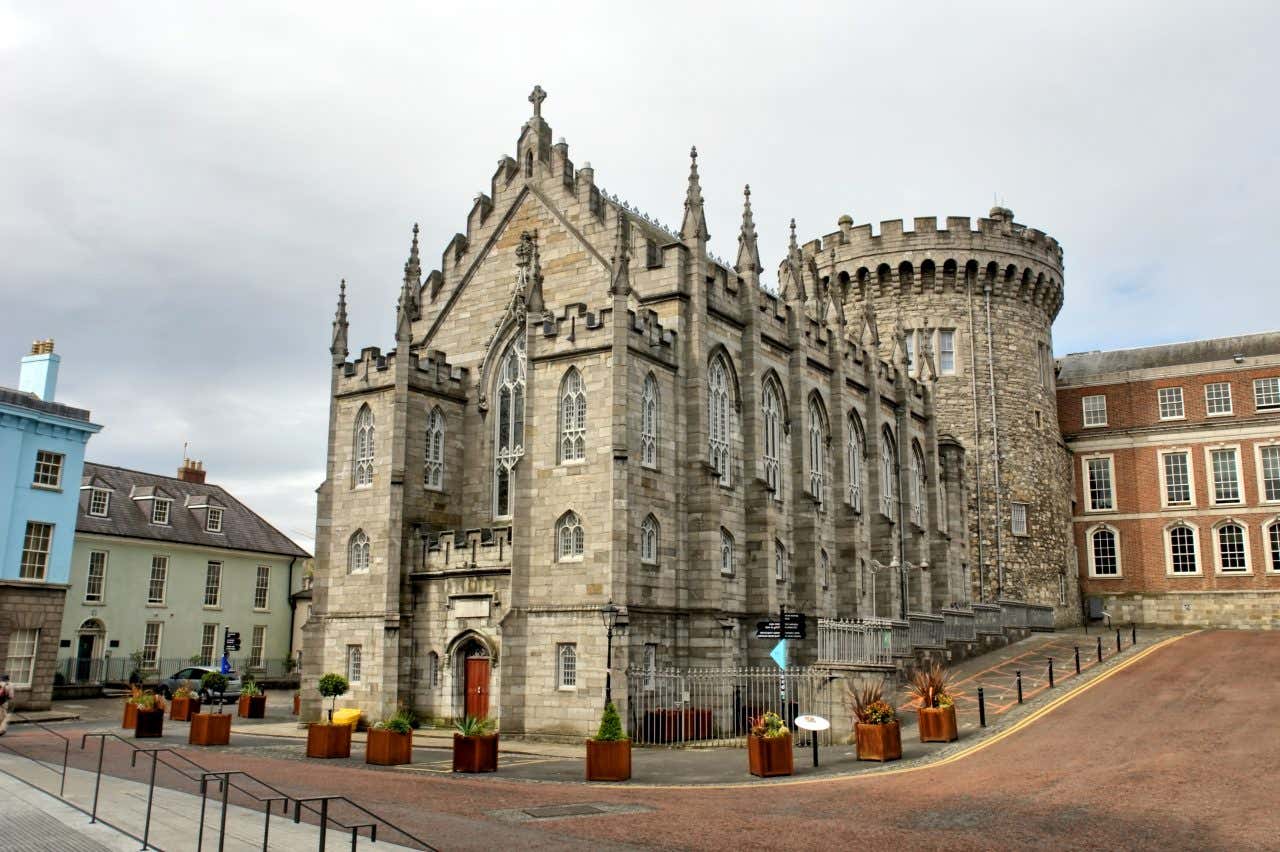
5. See the Spire on O’Connell Street
One of the city’s best-known landmarks is the Spire of Dublin on O’Connell Street, right in the heart of the city. This strange landmark is a 120-meter (390-ft) stainless steel ‘needle’, built to replace Nelson’s Pillar, which was destroyed by the Irish Republican Army in 1966. The Spire was then built to commemorate the millennium, and today it serves as a popular meeting point for locals!
Also on O’ Connell Street, the main thoroughfare of the city, you’ll find the General Post Office (GPO), which is considered one of the city’s most famous buildings, principal for its role as a headquarters during the Easter Rising, one of the most important moments in the lead up to Irish independence. You can learn more about this area of the city and its history on this Dublin North Side walking tour.
As of the writing of this article, just a short walk from the Spire, you’ll also find a temporary installation which is certainly worth checking out. The New York-Dublin Portal provides an unprecedented visual link between the two cities, live-streaming throughout the day.
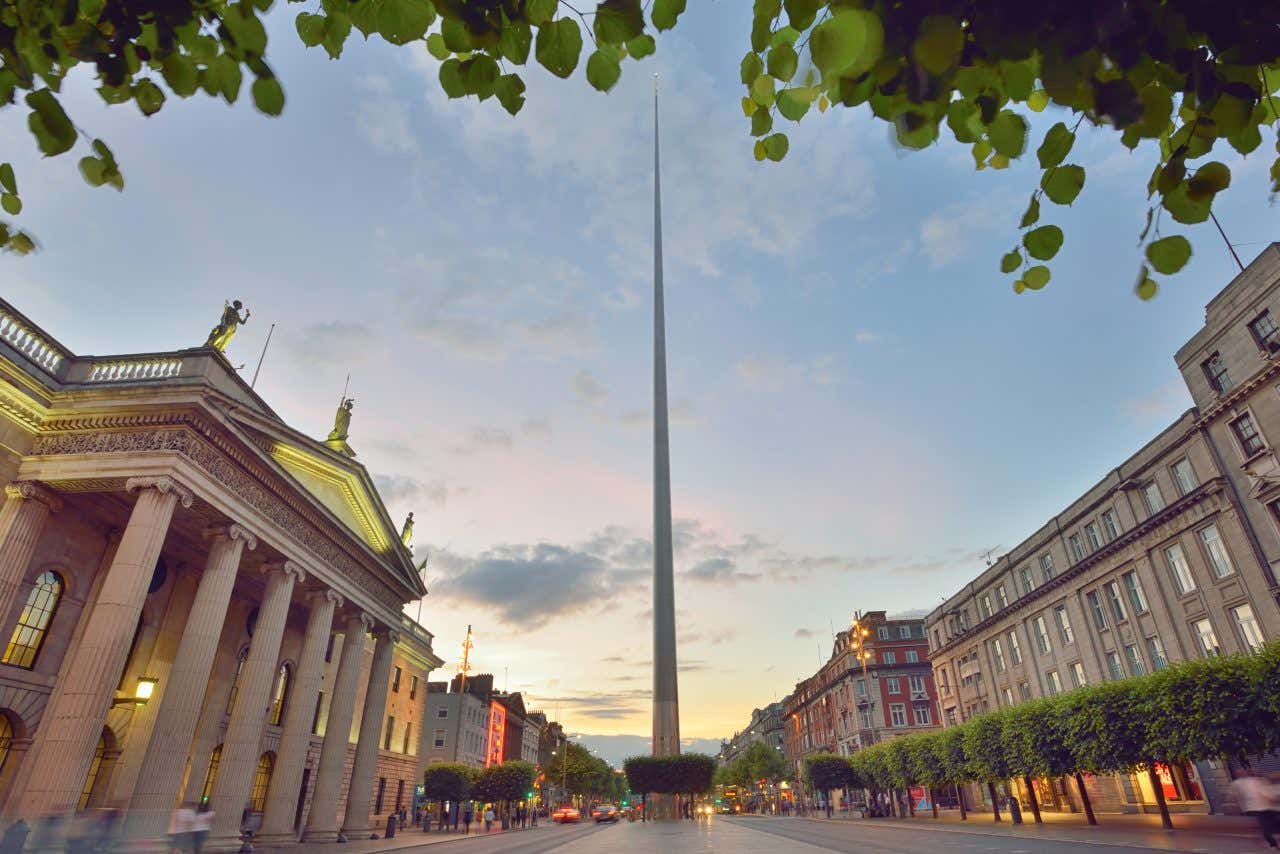
6. Experience Irish Pub Culture in Temple Bar
Famously, Dublin is home to some of the best pubs in the country. The most famous area for international travelers is Temple Bar—and for good reason! Almost every day of the week, you’ll find this area packed with tourists and live music blaring in multiple establishments. If that’s something that you’re interested in (as well as a trip to Copper Face Jack’s, the most famous nightclub in the country), definitely check out this Dublin Temple Bar pub crawl. That said, it’s pricy, and most pubs won’t offer what would be considered an authentic experience—if that’s what you’re looking for. See below some pubs we recommend checking out!
- For the oldest pub in Dublin: The Brazen Head.
- For the smallest pub: Dawson Lounge.
- For ‘the best pints’: Kehoes, the Long Hall, Bowe’s Bar, Gravedigger’s.
There’s more to the Dublin pub scene than pints… In fact, Ireland is also famed for being the creator of the Irish Coffee—a wonderful concoction with a base of coffee and whiskey. On this Irish Coffee Masterclass, you can learn to make an authentic version of this beloved drink and learn about its surprising history.
7. Take a Dip at the Forty Foot in Sandycove
There are lots of great spots to take a dip in Dublin. Bull Island, Seapoint, Portmarnock… but our favourite spot for a dip is at the Forty Foot in Sandycove. This bathing spot has been in use for at least 250 years and has been known as the Forty Foot since at least the 1800s, though the origins of this name are not certain. There are several points from which you can jump into the water at high tide, though be warned: the water will be pretty chilly…
Martello Tower, which is just a stone’s throw from the Forty Foot, is the setting of the opening section of James Joyce’s Ulysses. The tower is now home to a small museum dedicated to the Irish author, which is well worth checking out, and provides a fantastic view of the bay.
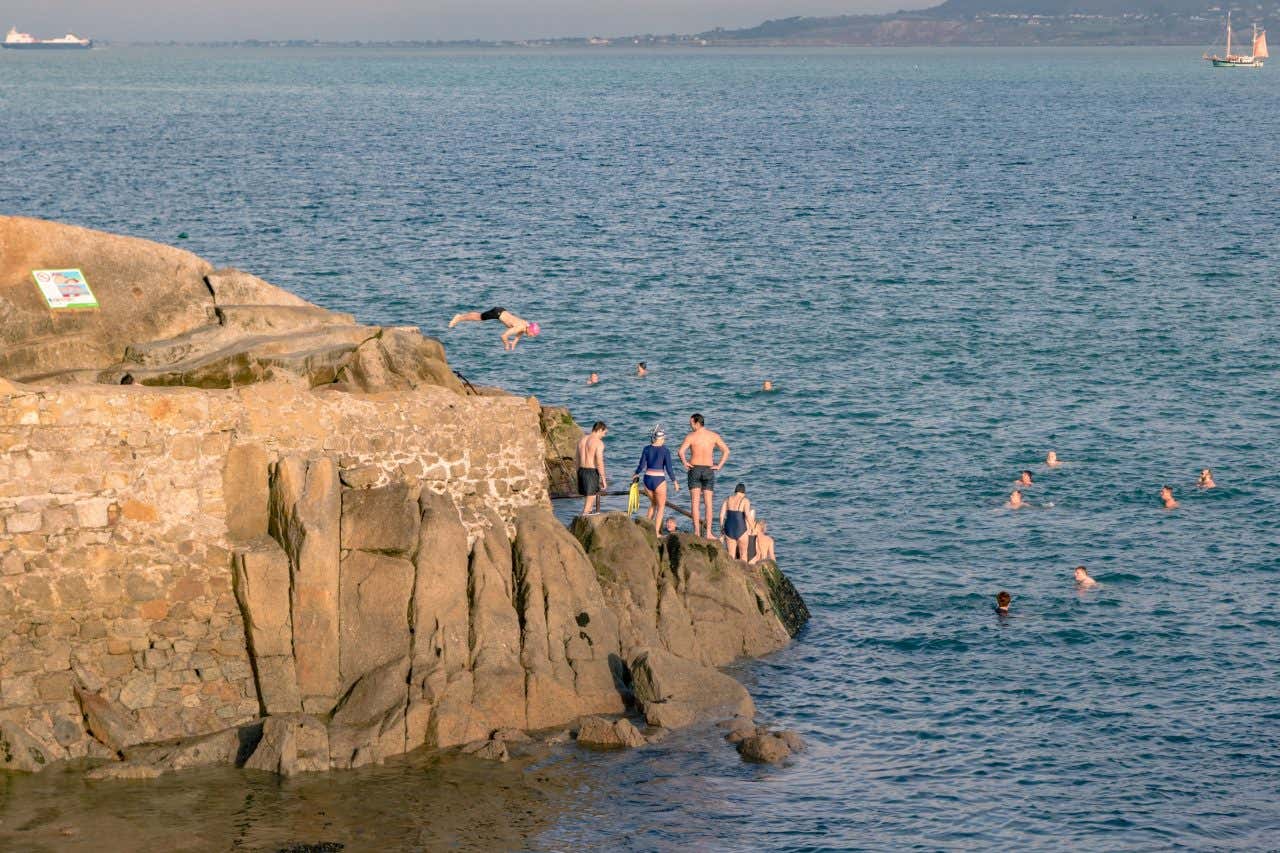
8. Visit the Irish Rock ‘n’ Roll Museum
Ireland has introduced various internationally-recognised acts to the Rock ‘n’ Roll scene and it continues to do so to this day. If you’re interested in music, we recommend that you visit the Irish Rock ‘n’ Roll Museum in Temple Bar. On this tour, you’ll find everything from iconic memorabilia to authentic recording equipment. You’ll visit Apollo Studios and the Button Factory stage to get a feel for the Irish Rock scene, both past and present!
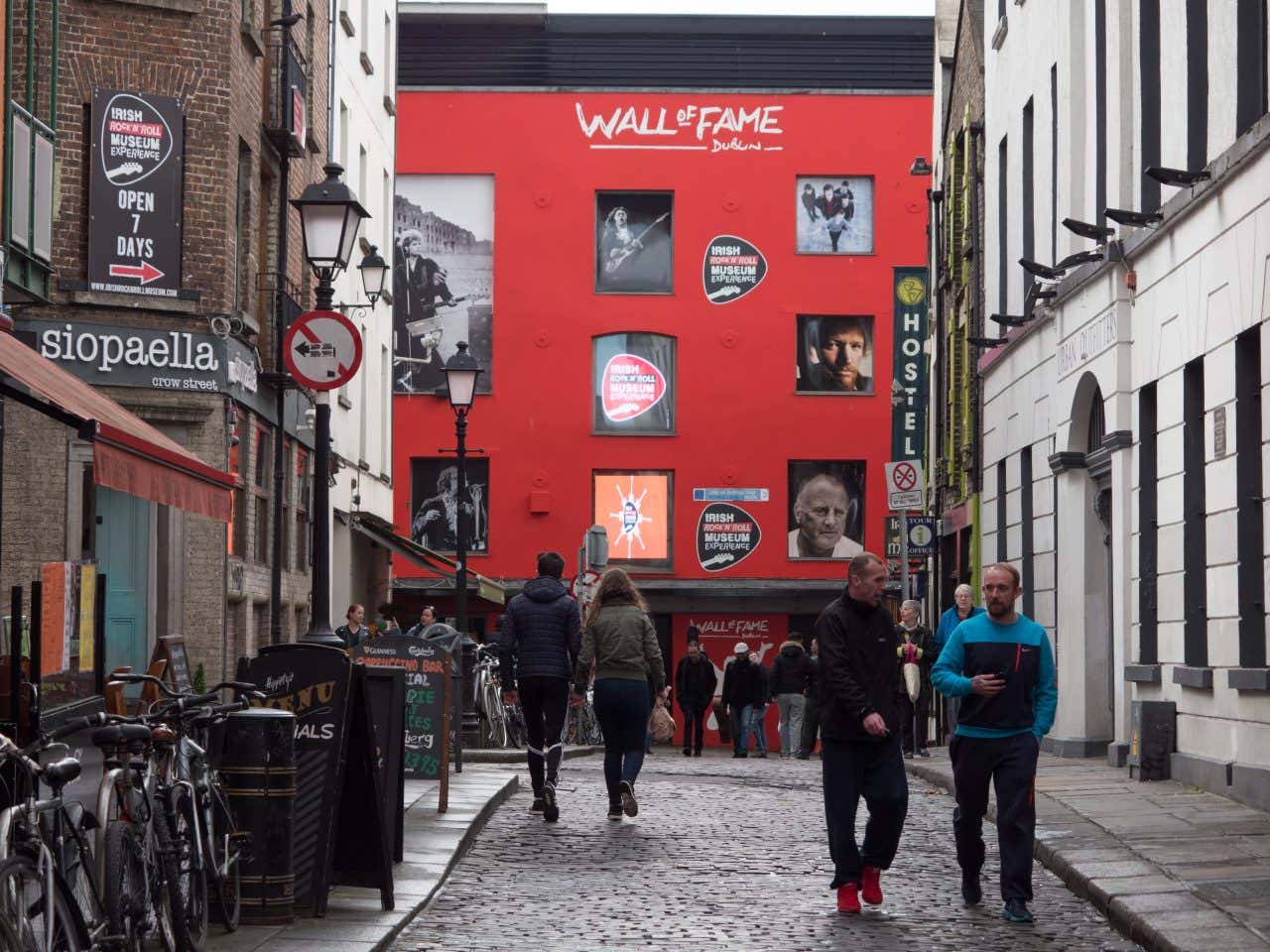
9. Go Shopping on Grafton Street (and Dublin’s other Shopping Districts)
Along with plenty of cultural activities, Dublin is a pretty good place to get some shopping done! The main shopping hub in the city is Grafton Street, home to high-street shops, department stores, and some independent boutiques. All along the street, which stretches from Stephen’s Green to around Trinity College, you’ll walk past some fantastic buskers—in fact, it was here that Bono began his career!
On the north side of the city, Henry Street is the equivalent shopping street, and just off it is Moore Street, home to Moore Street Market. This fruit and veg market dates back to the 18th century, and is worth having a walk through! Dublin is full of fantastic markets, check out some of our favourites:
- Dún Laoghaire Market: This market takes place every Sunday in People’s Park, on the south side of Dublin. Here you’ll find great coffee, and be able to sample cuisines from all over the world—what’s more, it’s all set in a beautiful park with sea views!
- George’s Arcade: Right in the city centre, this Victorian market is home to a number of independent stalls that sell jewellery, vintage clothing, food, and much more!

10. Grab a Ticket to the National Wax Museum
The National Wax Museum has quickly become a must-visit attraction in the heart of the city. In the museum, you’ll be able to grab a selfie with your favourite public figures and characters, from Father Ted to Albert Einstein. Located in the city center on Westmoreland Street, grab a ticket to the National Wax Museum with Civitatis.

11. Tap Your Foot to Traditional Irish Folk Music
Traditional Irish music, generally referred to as ‘trad’, is a central part of the nation’s culture. All over the country, you might be lucky enough to come across (often impromptu) trad sessions led by highly skilled musicians and watched on by cheery crowds. In the city center, there are a good few pubs which play music most days of the week, including a number in Temple Bar. Another option is this Irish Folk Show + Dinner. At this show, you’ll eat a hearty Irish dinner and listen to some high-quality trad, played using a bodhrán, a harp, bagpipes, and more!
12. Go to the Childhood Home of Oscar Wilde
If you’re at all interested in literature, Dublin is a fantastic city to visit, having produced countless writers and poets over the centuries, from W.B. Yeats and James Joyce to Oscar Wilde. We recommend grabbing a ticket to the Oscar Wilde House. Right in the center of the city, the childhood home of the writer is open to the public. Here, you’ll gain an insight not only into Wilde’s life but also into what Dublin was like during his lifetime.
Another great option for literature enthusiasts is this ticket to the Museum of Literature Ireland, which covers everything from medieval literature to contemporary greats through immersive multimedia exhibitions.
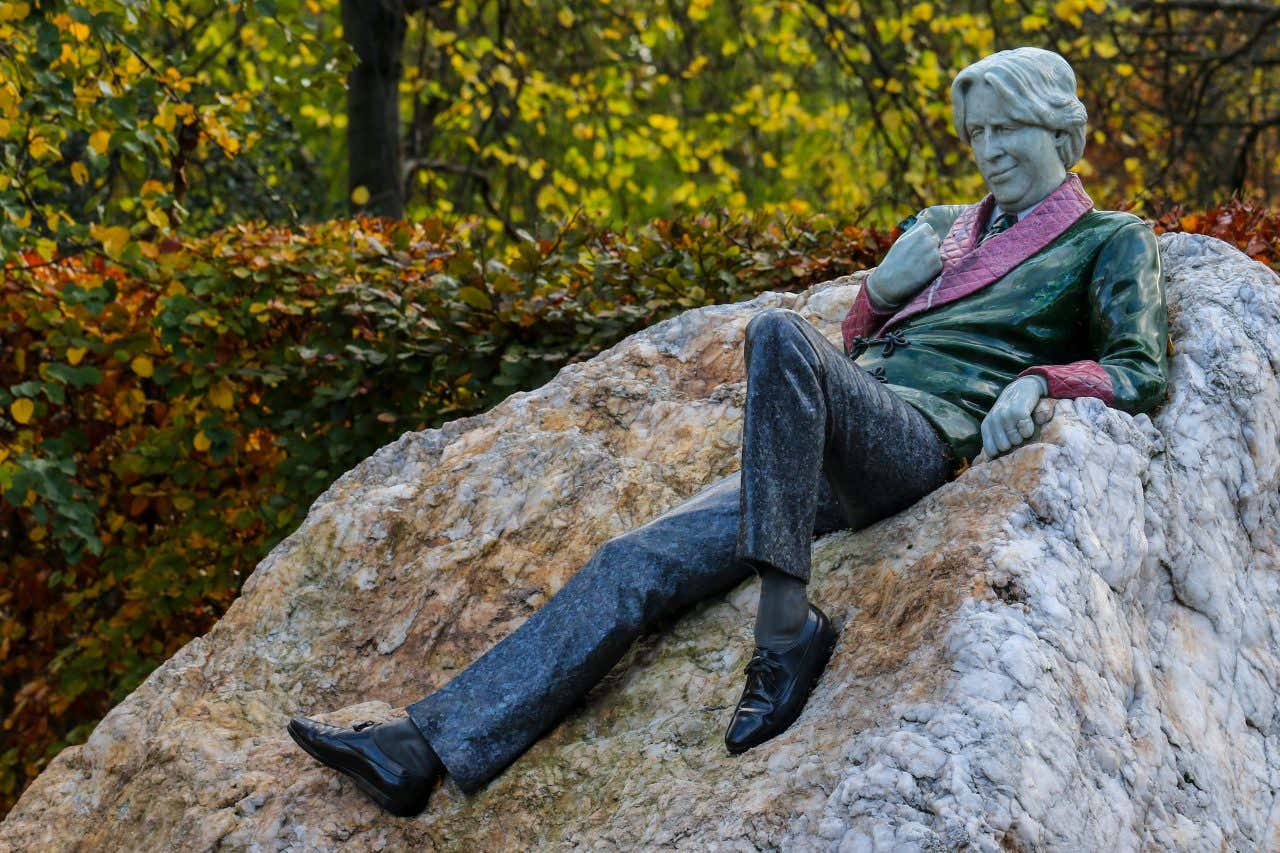
13. Feed the Ducks at St. Stephen’s Green
St. Stephen’s Green is a lovely green space right in the center of the city. This Victorian public park is home to flower beds, fountains, and statues dedicated to historical figures. This is a great place to bring a takeaway coffee and people-watch for a little while! Famously, Bono and U2 brought sheep to graze on the green, an ancient right afforded to those who receive the honorary ‘Freedom of the City’ award.
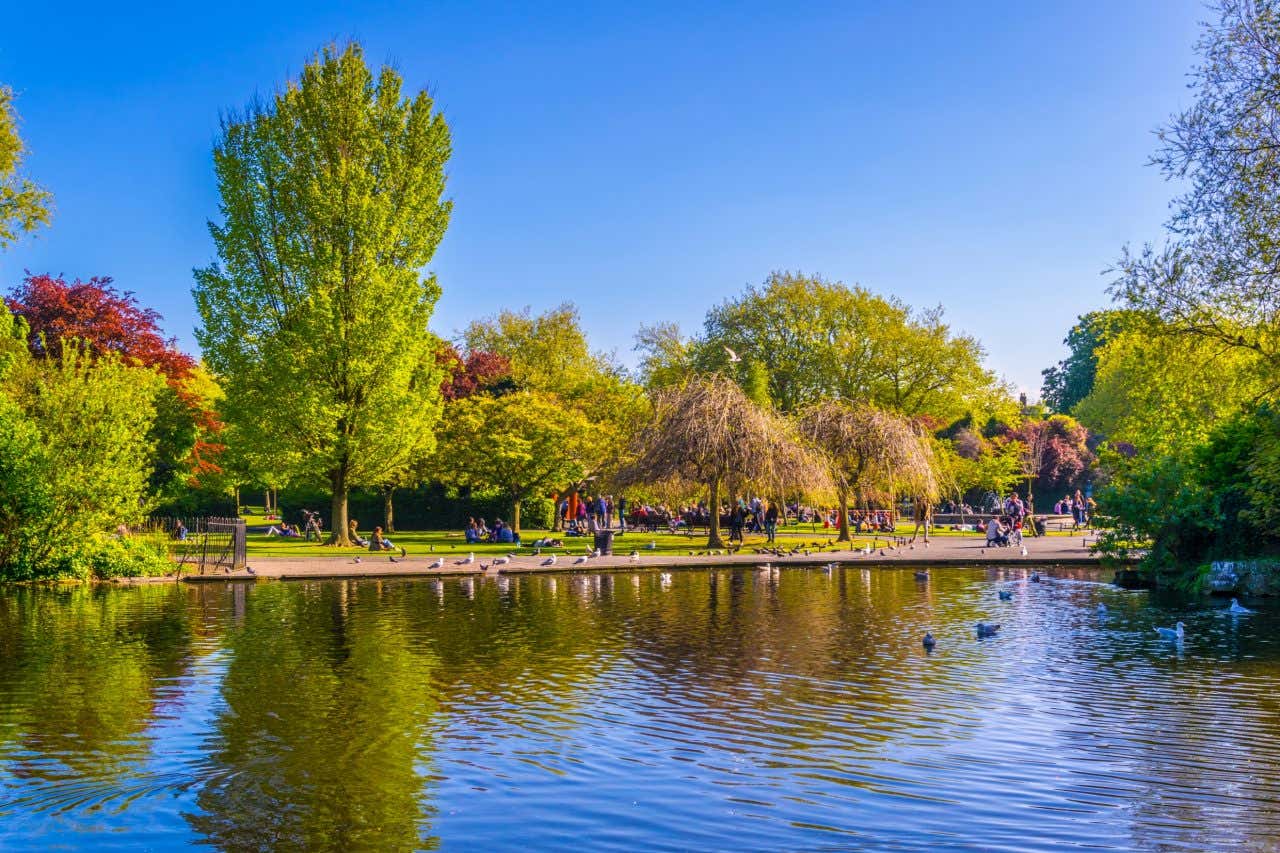
14. Explore Glendalough & the Wicklow Mountains
Just south of County Dublin are the incredible Wicklow Mountains and the valley of Glendalough. Here, you’ll enjoy breathtaking scenery, gorgeous lakes and waterfalls as well as the Glendalough Monastic Site, which is over 1,000 years old.
On this Glendalough, Wicklow & Kilkenny day trip, you’ll get to see this beautiful landscape for yourself, as well as the charming village of Kilkenny, Ireland’s Medieval capital!
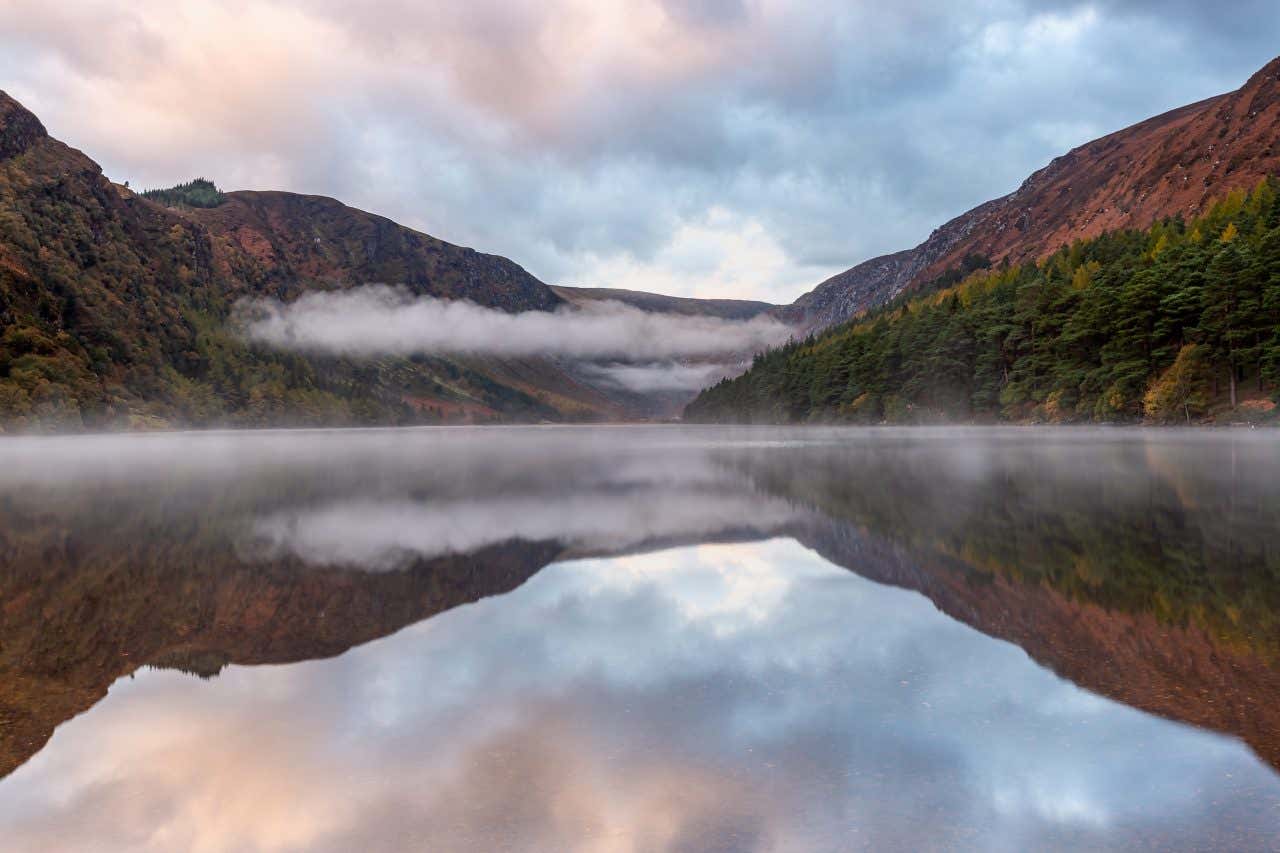
15. Taste the Local Delicacies
We’ll admit that Ireland, and indeed, Dublin, are not known for having the best gastronomy. However, the country does enjoy fantastic fresh food and hearty dishes. Coddle is possibly the best-known dish specific to Dublin. This comforting stew consists of a light broth with sausages, bacon, potatoes, and onions, and would traditionally have been made on a Thursday, with leftover food from during the week. Another Irish food to try is potato farl or potato cake, a delicious breakfast food, which is a bit like a soft hashbrown. To taste some of Dublin’s finest food, consider going on this Dublin food tour, during which you’ll try farl, smoked salmon, soda bread, stew, and more!
Day Trips from Dublin
Dublin is a beautiful city with plenty to see. That said, in such a small country, you can get almost anywhere in no more than a couple of hours. So, if you have time, be sure to make a day trip or two to get the most out of your travels in Ireland. Check out some of our recommendations:
The Giant’s Causeway
The Giant’s Causeway is one of the most famous sites in Ireland, located in Bushmills, County Antrim. The iconic basalt columns for which this area is famous are thought to have been formed over 50 million years ago, as a result of volcanic activity. However, local legends attribute the geological formation to a giant building a bridge to Scotland.
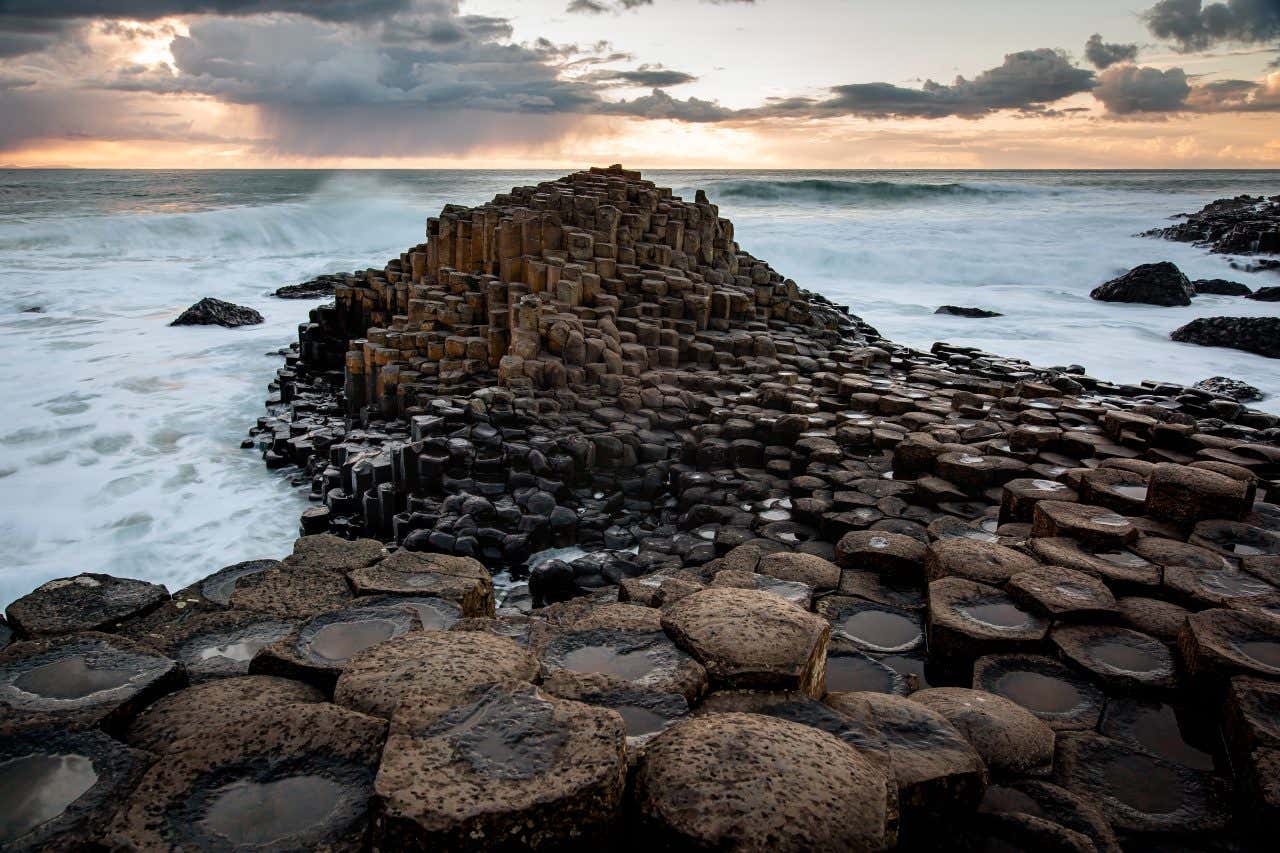
Kiss the Blarney Stone
Kissing the Blarney Stone is a tradition which goes back hundreds of years. Those who kiss the stone are said to receive the gift of eloquence and persuasiveness—known in Ireland as the ‘gift of the gab’. You can find the rock at Blarney Castle, which dates back to the mid-15th century. Check out below a guided day trip which includes a stop at Blarney Castle.

Visit the Cliffs of Moher, a UNESCO World Heritage Site
The Cliffs of Moher are an absolute must-visit in Ireland. These rugged cliffs tower above the coast of Clare, on the west coast of the country. There are lots of ways of visiting this UNESCO World Heritage Site with Civitatis, including day trips from Dublin.
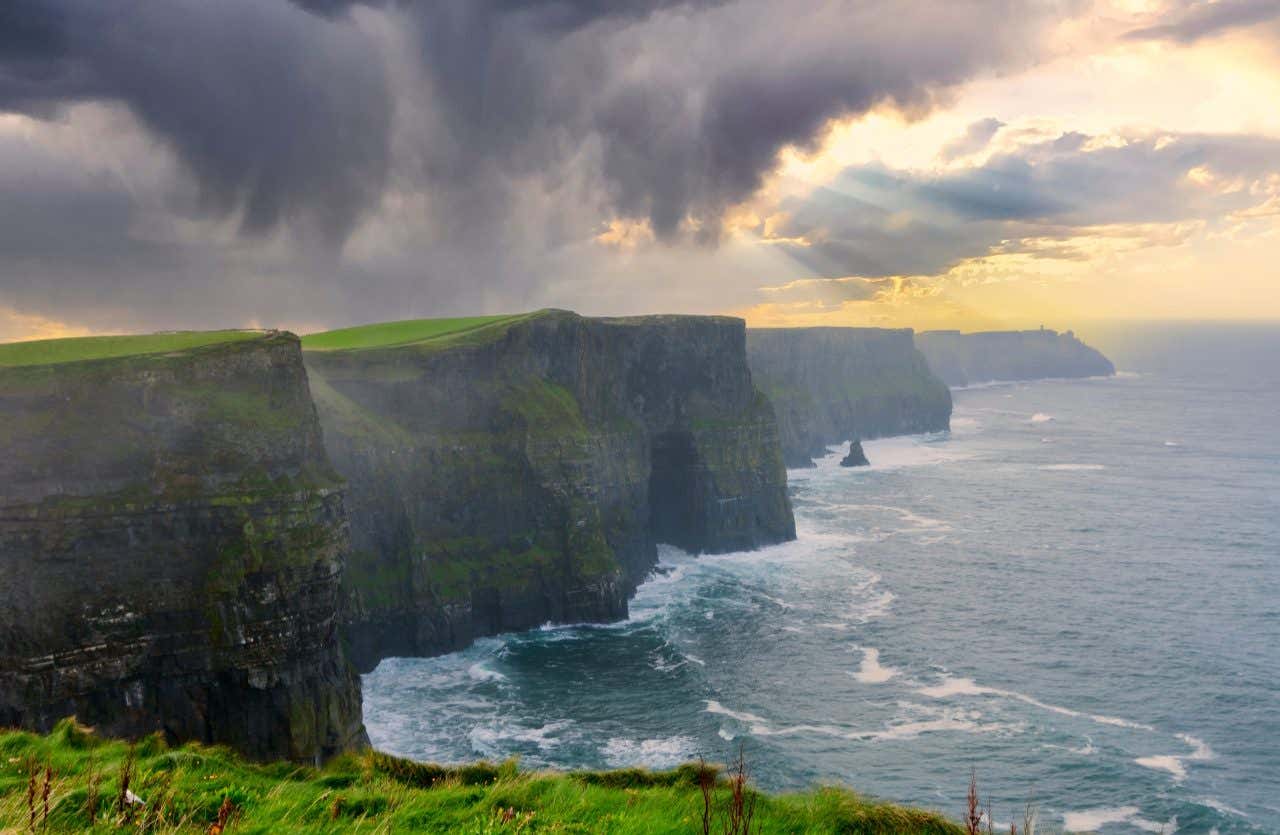
Discover Ancient Ireland at the Hill of Tara
The Hill of Tara is perhaps Ancient Ireland’s most sacred site, dating back to the Stone Age. This historic site became the seat of high kings in Ireland during the Early Christian period, and all old Irish roads lead here. There is plenty of legend and folklore surrounding this site, which you can learn more about as part of the below tour!

Well, there you have it! There’s lots more we would have loved to have included in this list. If you think we’ve missed any essentials, leave a comment below. If you’re planning a trip to the Irish capital, check out more things to do in Dublin with Civitatis and fill your trip! Go n-éirí an bóthar leat! (Have a good trip)






